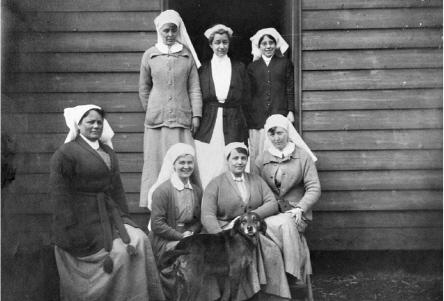The Other Anzacs (47 page)

Now, in November 1917, as the dreadful slaughter of the offensive drew to a close after months of bitter fighting in deep mud, Anne waited in Abbeville for final orders to go to No. 48 Casualty Clearing Station, eighty kilometres from Amiens. With time to spare, she walked to No. 3 General Hospital to catch up with friends. ‘Most of them envied me for going to the CCS, but I never was enthusiastic over a CCS, still less since the raids at Calais.’
3
She would never forget the drive out in an ambulance from Amiens, and the ‘real waste, devastation and desolation’ that brought home the full meaning of war. There was faint moonlight as her driver took her kilometre after kilometre to the town of Albert. ‘Thence on, the ruins become worse and worse—the true havoc of war—not a tree left of the once beautiful avenues. Only the torn ragged stumps remain, and they are touched with whitewash so as to guide the traffic on dark nights.’
4
The closer they got to the front, the less light there was. The headlights on her ambulance were turned off, the only light coming occasionally from the torches of sentries who stood in the middle of the road and demanded, ‘Who goes there?’ The vehicle would stop and then be given the signal to carry on. Little white crosses dotted the roadside to the right and left. This to Anne was sacred ground. ‘I became silent, my heart ached, for this is a part of the vast valley of the Somme, where lie so many of our own heroes who have fought and fallen. Some things are too sacred for words.’
5
She drove past abandoned tanks and aeroplanes, past craters and past the devastation of Bapaume, then another sixteen kilometres to the clearing station, which lay between the ruined villages of Etres and Etrecourt, just eight kilometres from the line.
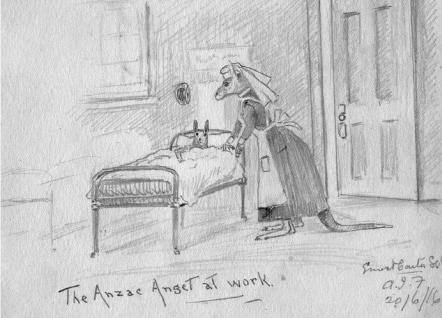
To many of the wounded soldiers, the nurses represented a role beyond that of just physical care. That sentiment is captured here in a pencil sketch from the wartime autograph book Sister Ida Moore kept in France. (Courtesy of Iain McInnis)
Sister Olive Haynes was stationed at No. 13 Stationary Hospital at Boulogne caring for wounded troops such as this man. ‘Both his arms are wounded, his chest and head, and he is all slung up, and a man came and took this photo one day. He thought he looked so cute smoking with all that, ’ she wrote to her mother. (Photo courtesy of Margaret Young)

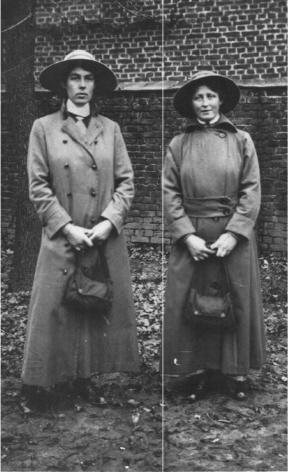
Sister Olive Haynes (left) and her friend, Sister ‘Pete’ Peters, about to go on leave at Boulogne. (Photo courtesy of Margaret Young)
Sister Kath King (third from right) on her wedding on 31 January 1917. Regulations required her to resign from the Australian Army Nursing Service because she was to be married. Gordon Carter (second from right) had just been promoted to Lieutenant Colonel. (Photo courtesy of John Carter)
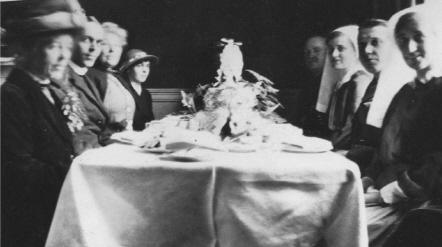
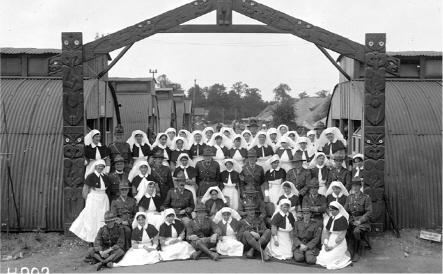
New Zealand nurses and medical officers at the New Zealand Stationary Hospital, Wisques, France. The camp was entered through an elaborately carved traditional Maori gateway. (Photo courtesy of the Royal New Zealand Returned and Services’ Association Collection, the Alexander Turnbull Library, Wellington, NZ, G-13478-1/2)
Four New Zealand nurses look out of the windows of their hut, ‘The PoppInn’, at the New Zealand Stationary Hospital at Wisques. New Zealand nurses, like their Australian colleagues, tried valiantly to make their accommodation as homely as possible. (Photo courtesy of the Royal New Zealand Returned and Services’ Association Collection, the Alexander Turnbull Library, Wellington, NZ, G-013482-1/2)
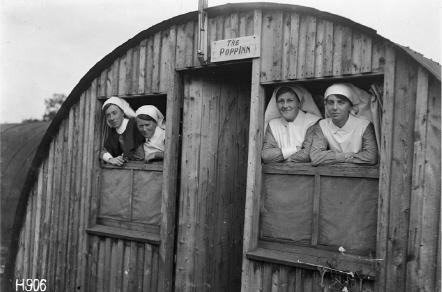
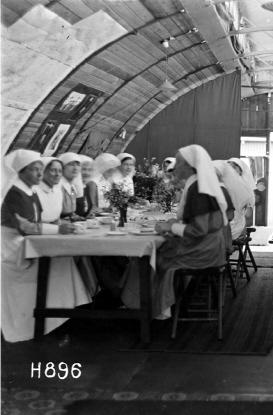
Inside the nurses’ mess hut at the New Zealand Stationary Hospital, Wisques. (Photo courtesy of the Royal New Zealand Returned and Services’ Association Collection, the Alexander Turnbull Library, Wellington, NZ, G-013472-1/2)
Inside the sisters’ lounge at the New Zealand Stationary Hospital, Wisques. (Photo courtesy of the Royal New Zealand Returned and Services’ Association Collection, the Alexander Turnbull Library, Wellington, NZ, G-013483-1/2)
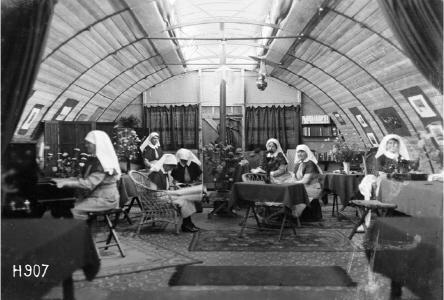
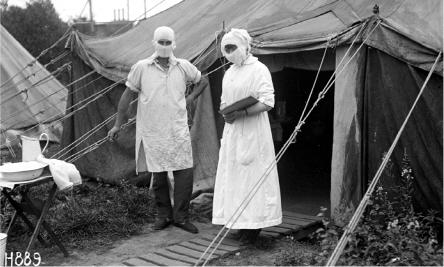
A New Zealand nurse and orderly outside the diphtheria ward, New Zealand Stationary Hospital, Wisques. So contagious was diphtheria that it was a problem throughout the war. (Photo courtesy of the Royal New Zealand Returned and Services’ Association Collection, the Alexander Turnbull Library, Wellington, NZ, G-013466-1/2)
Bluebirds helped staff a mobile hospital established by a rich American woman, Mrs Bordern Turner, to operate behind the lines on the Western Front. Here, Sisters Hilda Loxton (back left), Lynette Crozier (front, second right), Helen Wallace (front, third right) and Minnie Hough (far right) stand outside one of the hospital buildings in 1917. (Photo courtesy of the Australian War Memorial P01908.007)
